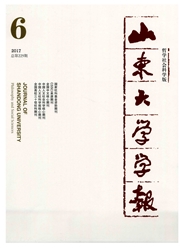

 中文摘要:
中文摘要:
中亚五国是"丝绸之路经济带"沿线的核心区域,所以研究中国与中亚五国贸易潜力对推进丝绸之路经济带建设具有十分重要的理论价值与现实意义。通过构建引力模型对中国与中亚五国贸易潜力进行实证分析及前景展望,结果表明:双方经济发展水平、交通运输成本、关税水平和上合组织等因素是影响出口及双边贸易的主要因素,其中双方经济发展水平、上合组织对出口及双边贸易总量有积极的影响,而距离及关税税率水平对出口和双边贸易总量起到一定的阻碍作用,其中关税水平对双边贸易总额的阻碍作用更为强烈。中国同哈萨克斯坦、塔吉克斯坦、吉尔吉斯斯坦、土库曼斯坦双边贸易在2010年前基本处于"潜力巨大型",而2010年后,处于"潜力再造型"状态。而乌兹别克斯坦除2009年以外一直处于"潜力巨大型"。因此推进上合组织框架下中国—中亚自由贸易区的建立,加快区域一体化的进程,加快中国与中亚国家互联互通建设有利于促进中国对中亚国家的双边贸易。此外,由于双方贸易的互补性及"丝绸之路经济带"的建设,中国与中亚五国贸易发展前景广阔。
 英文摘要:
英文摘要:
By constructing trade gravity model, the authors analyze the trade potential and prospect between China and central Asia countries. The findings suggest that: The economic development level of two sides, transportation cost, tariff level and SCO are the main factors in the impact of export and total trade; economic development level and SCO have a positive impact on bilateral trade and the total export, distance and tariff have hindered exports and bilateral trade, while tariff have a stronger obstructive effect on bilateral trade. Before 2010, the bilateral trade of China with Kazakhstan, Tajikistan, Kyrgyzstan, Turkmenistan, located in a "potential type", and after 2010, located in a"creating potential type". However, except in 2009, Uzbekistan has been in a "potential type". Therefore, we suggest that promoting China-Central Asia Free Trade Zone under SCO framework, accelerate the process of regional integration and speeding up the construction of interconnection will promote bilateral trade. Moreover, due to the complementary nature of trade and the building of "New Silk Road Economic Belt", the trade of China with five central Asian countries will have a bright prospect.
 同期刊论文项目
同期刊论文项目
 同项目期刊论文
同项目期刊论文
 期刊信息
期刊信息
